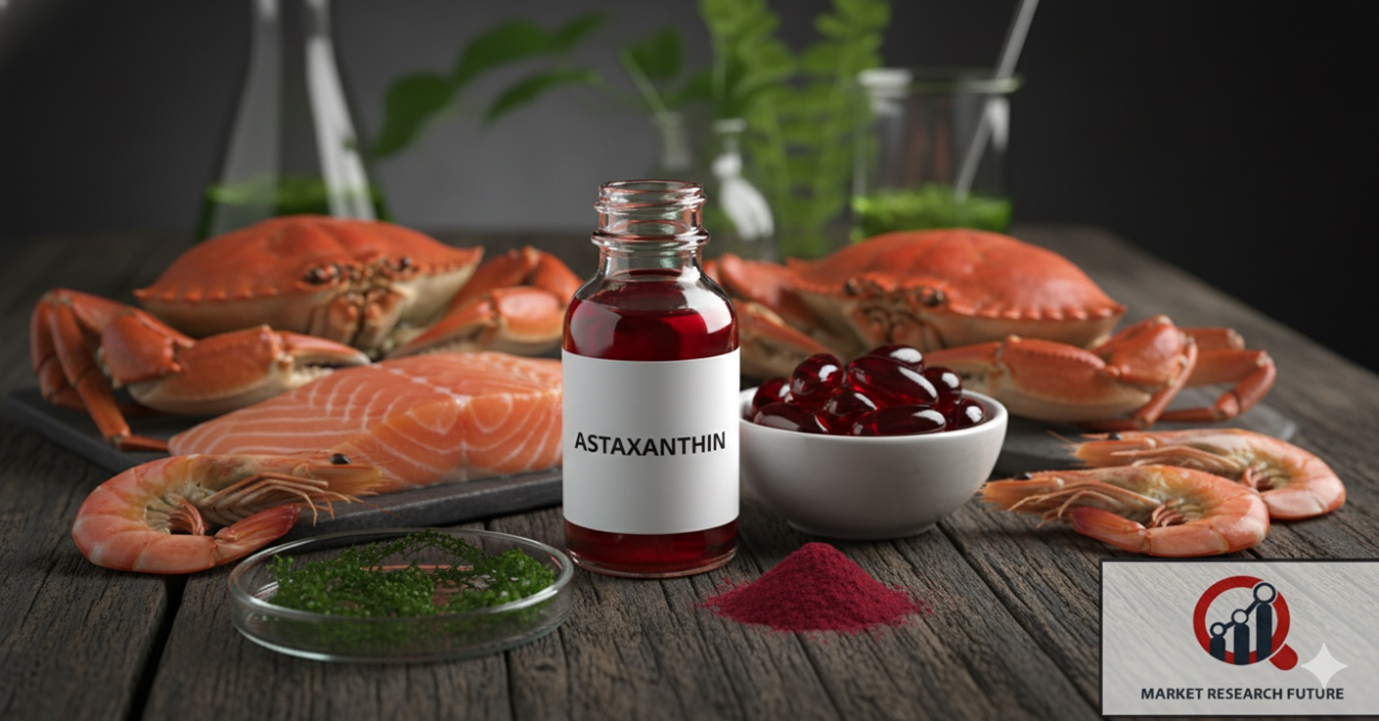Growing Application Areas are Undeniable Reasons behind the Astaxanthin Market
Astaxanthin: The Powerful Antioxidant Fueling Growth Across Industries

Astaxanthin, a powerful antioxidant, is a game changer. With a striking dark red color, this carotenoid is a growing favorite worldwide for its potential in health, beauty, and performance. The versatility of astaxanthin is the driving force for its escalating demand in the food and drink, drug, animal feed, and personal care industries. The rising awareness of health has monitored the growth of demand for this powerful antioxidant.
What is Astaxanthin?
Astaxanthin can be found in the microalgae Haematococcus pluvialis. It is also the pigment responsible for the red coloration of flamingos, salmon, and shellfish, as well as some shrimp. Interestingly, unlike most antioxidants, astaxanthin is able to cross the blood-brain and blood-retinal barriers, guarding against oxidative stress at every major organ, making astaxanthin a powerful antioxidant. It is also non-toxic, doesn’t bind to DNA, and can be taken in large quantities without negative consequences.
Expanding Application Areas
The astaxanthin market is divided into some main applications: food and beverages, animal feed, cosmetics, and pharmaceuticals. Among these, food-based uses are witnessing substantial growth due to the increasing consumer demand for natural, nutrient-rich foods. Within the food sector, astaxanthin fulfills the dual roles of a natural colorant and a functional ingredient.
Within the Animal Feed sector, such as Aquaculture and poultry, astaxanthin is used for growth promotion, health, and also to enhance pigmentation. It strengthens the immune system of livestock, improves the skin and feathers, and increases the yolk color.
Cosmetic manufacturers have also started to use astaxanthin due to its remarkable anti-aging and skin-repairing qualities. It is an excellent antioxidant, and is many times more powerful than cation and beta-carotene, which helps prevent skin aging attributes, improves elasticity, and helps to heal skin from UV ray exposure. It is found in most cosmetics that are aimed at aging skin.
Astaxanthin is used in health supplements and pharmaceuticals to protect the eyes, enhance the heart, help the mind, and for athletes, it reduces the inflammation in muscles and fatigue. It is also used for people under a lot of oxidative stress due to its ability to neutralize free radicals and detoxify heavy metals.
Market Outlook
Preventive healthcare is becoming a common practice, and the need for natural antioxidants is enjoying a steady rise. Astaxanthin is gaining more applications in various fields, and the medical and nutritional research being conducted on it guarantees a promising future for the compound. For healthcare, wellness, and beauty, astaxanthin is a miracle ingredient that offers immense value.

Leave a Comment